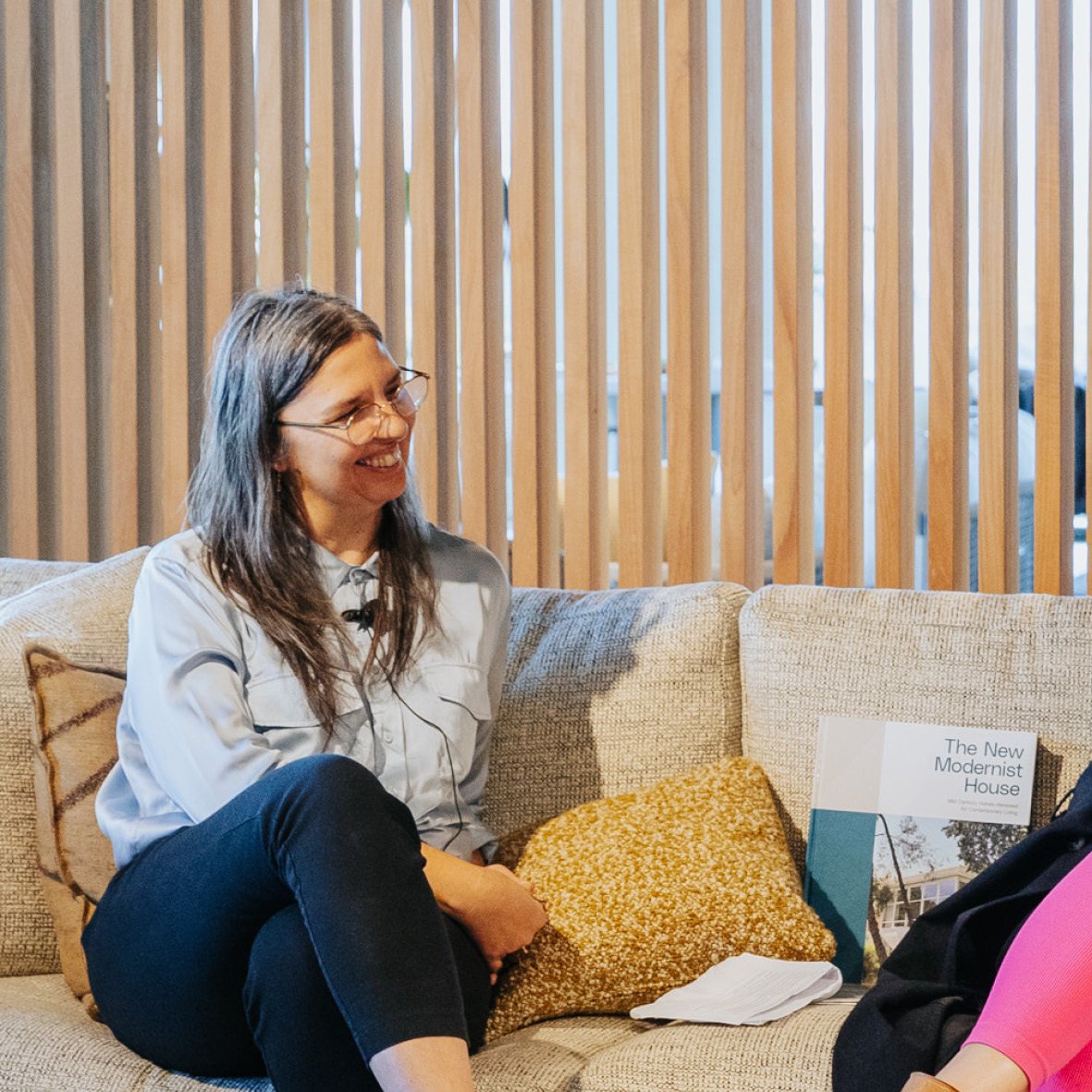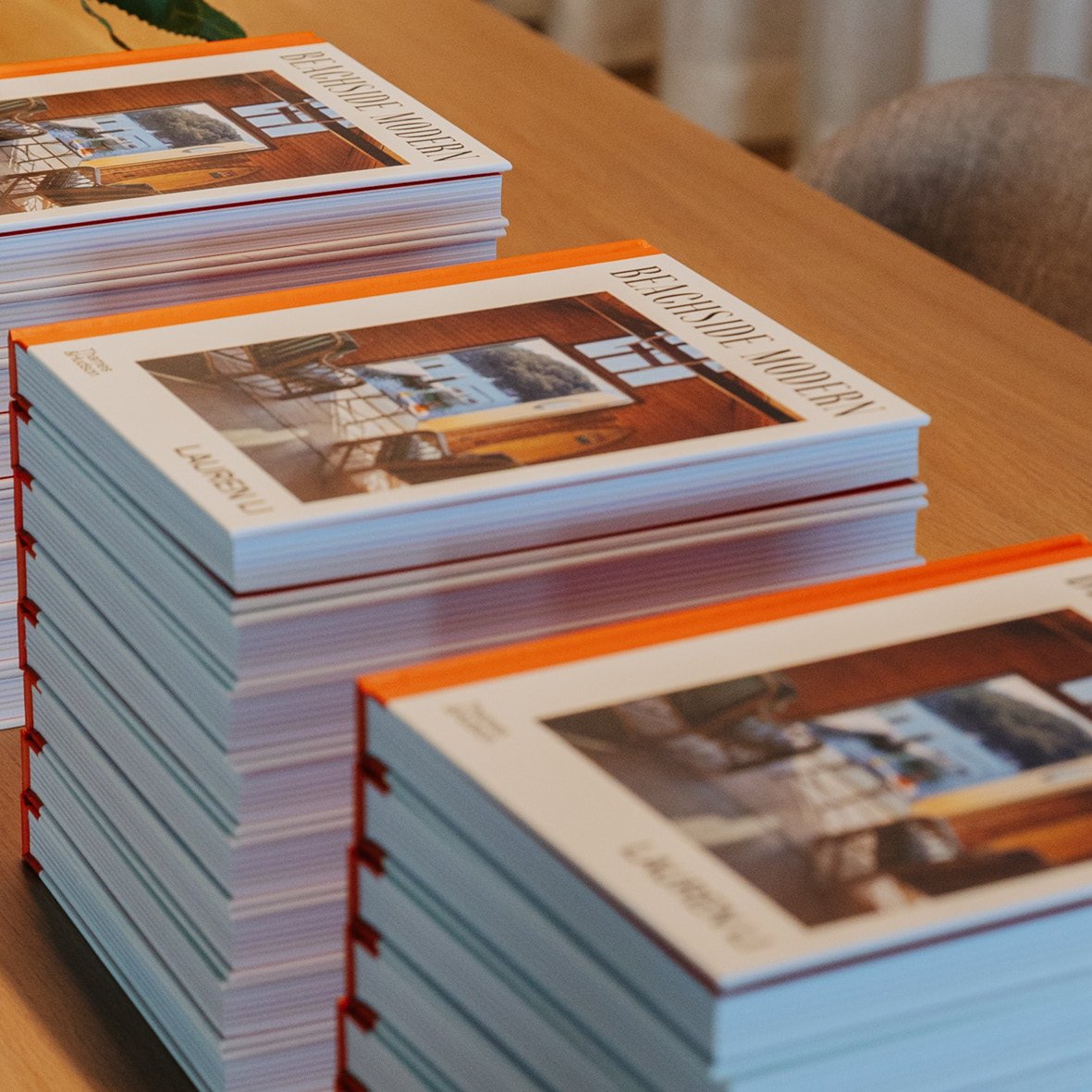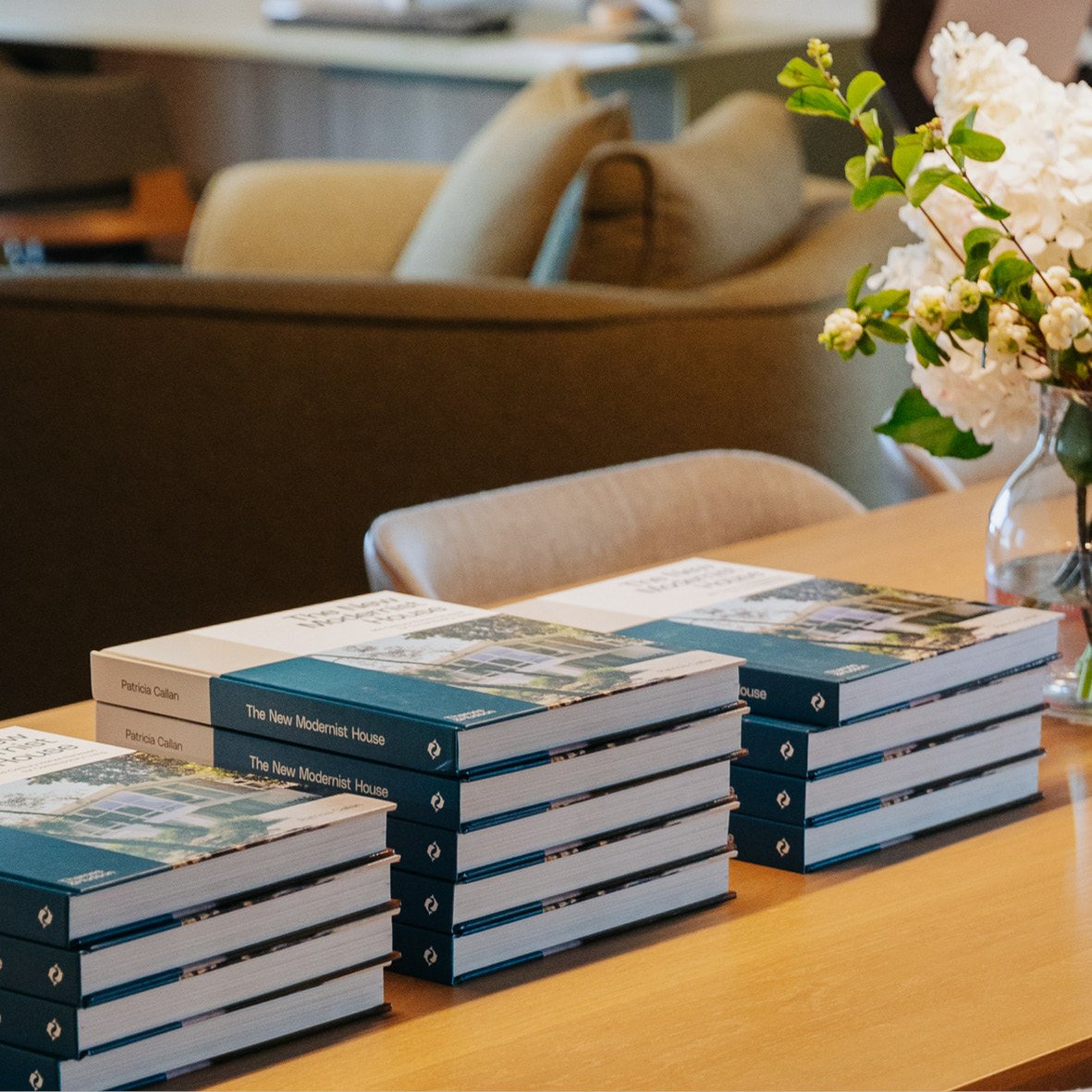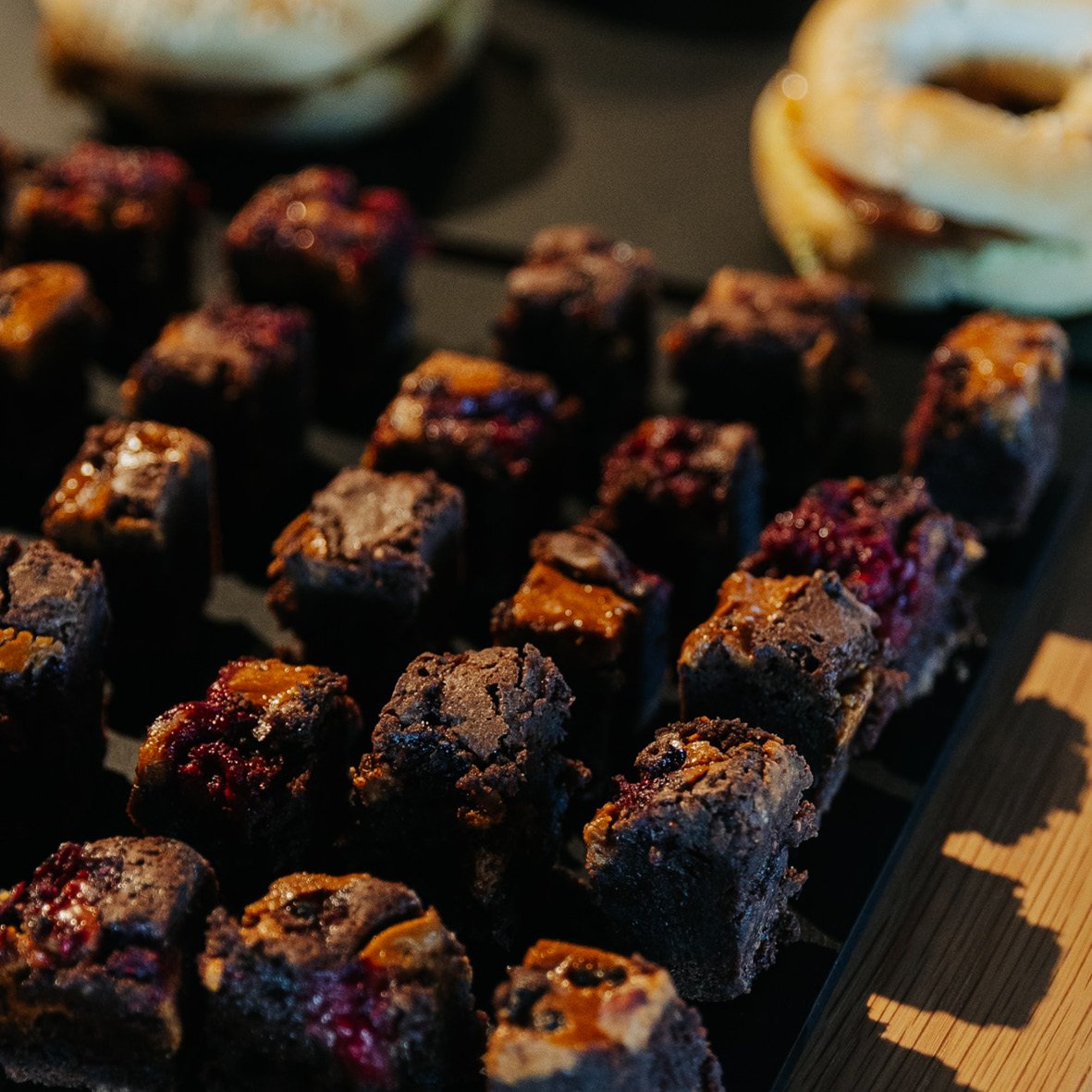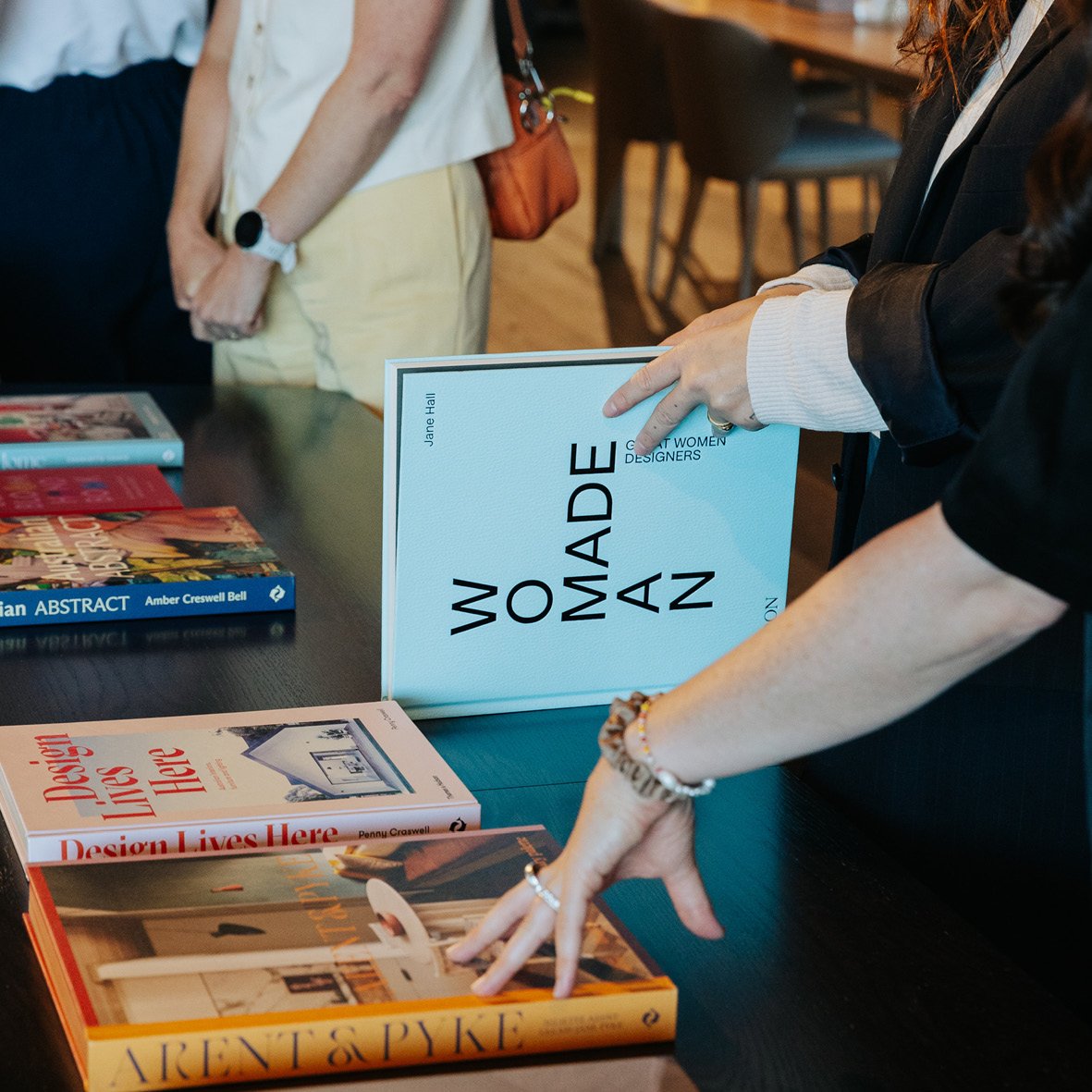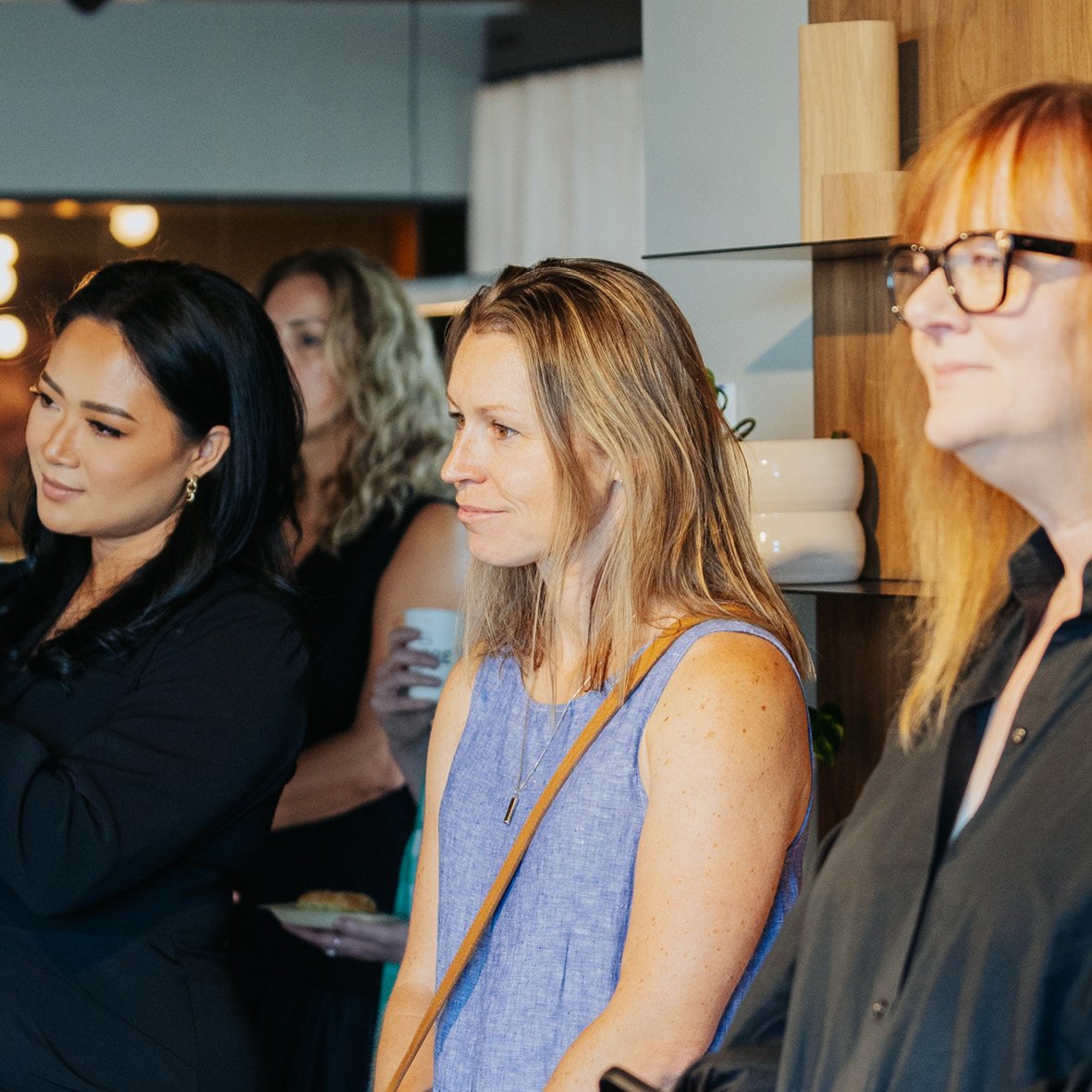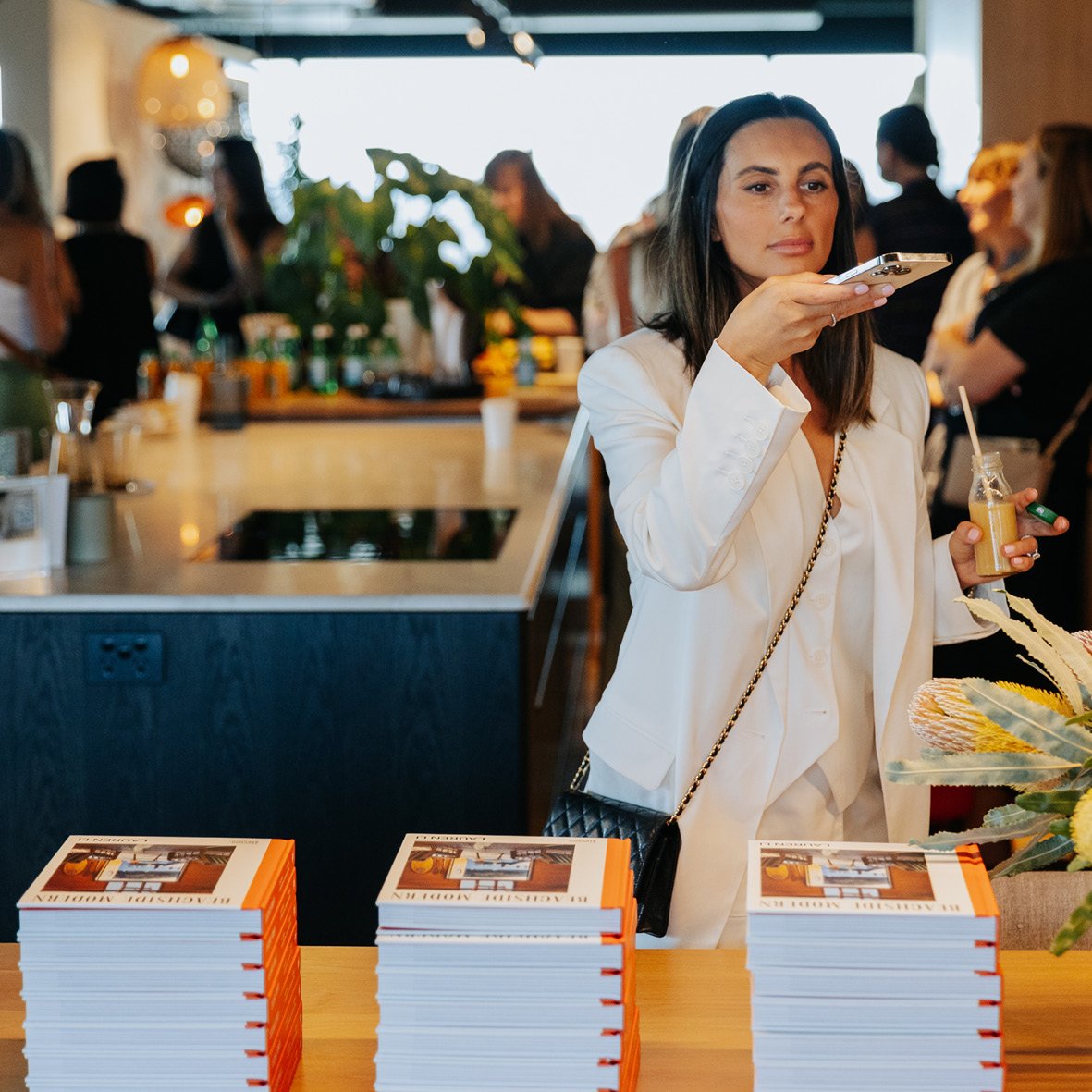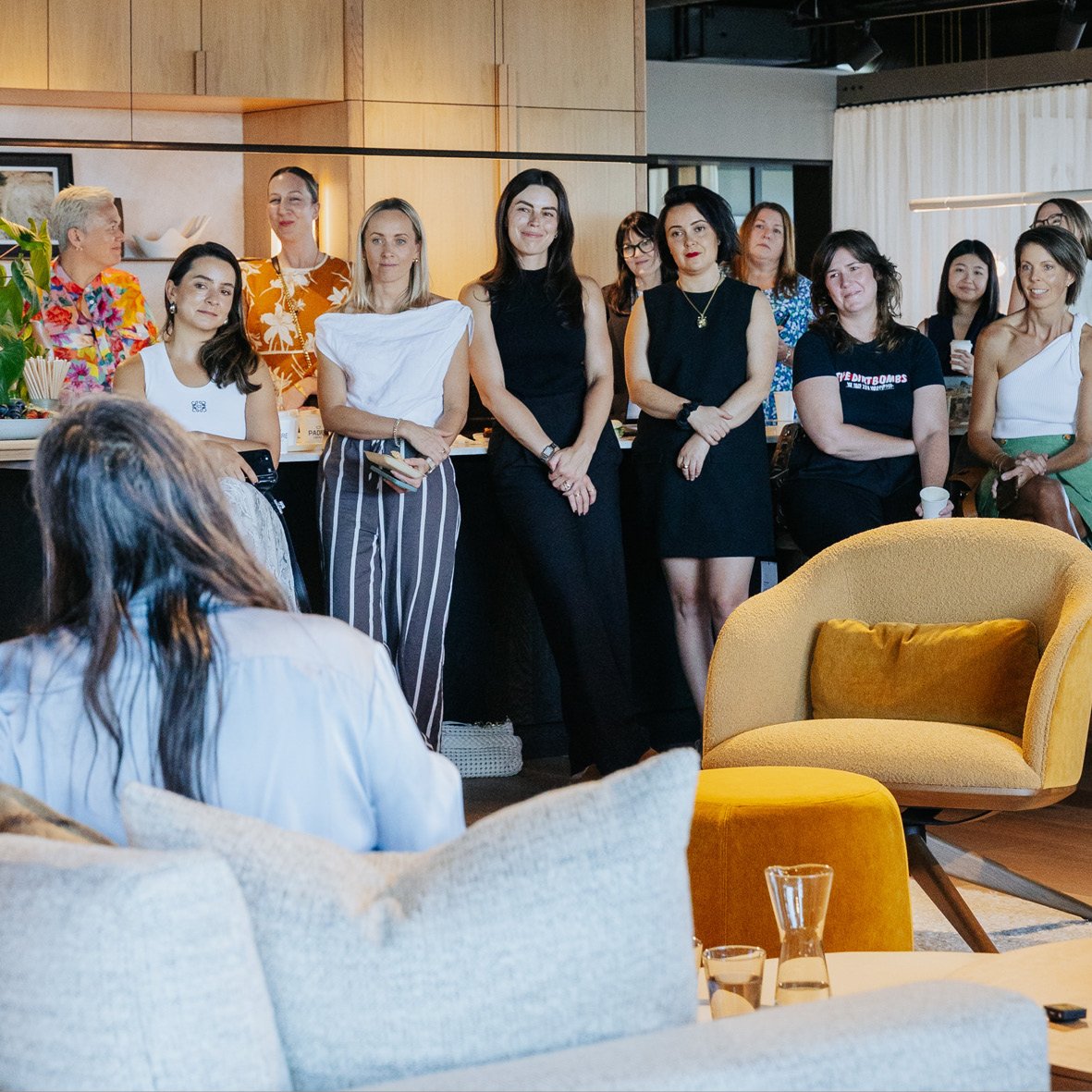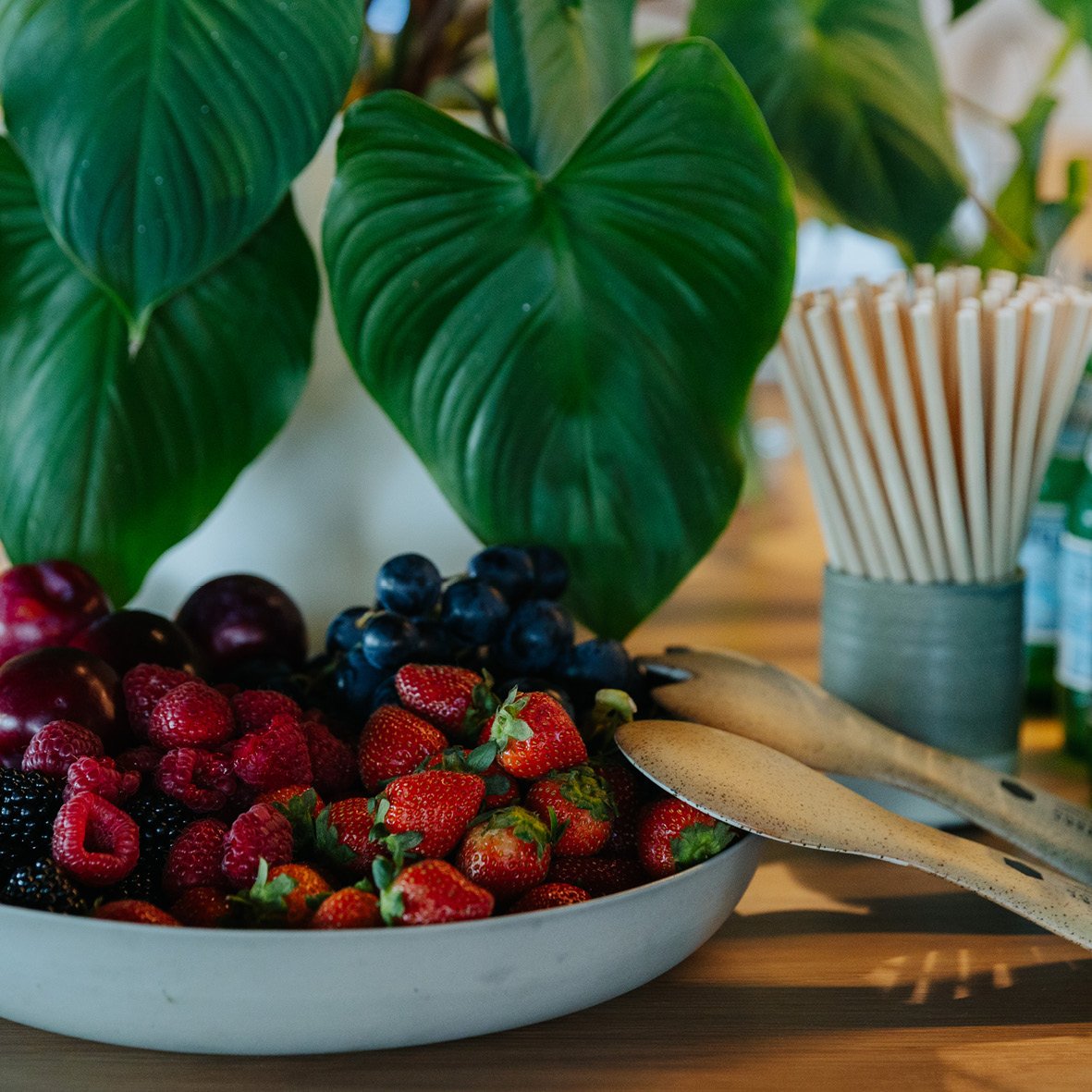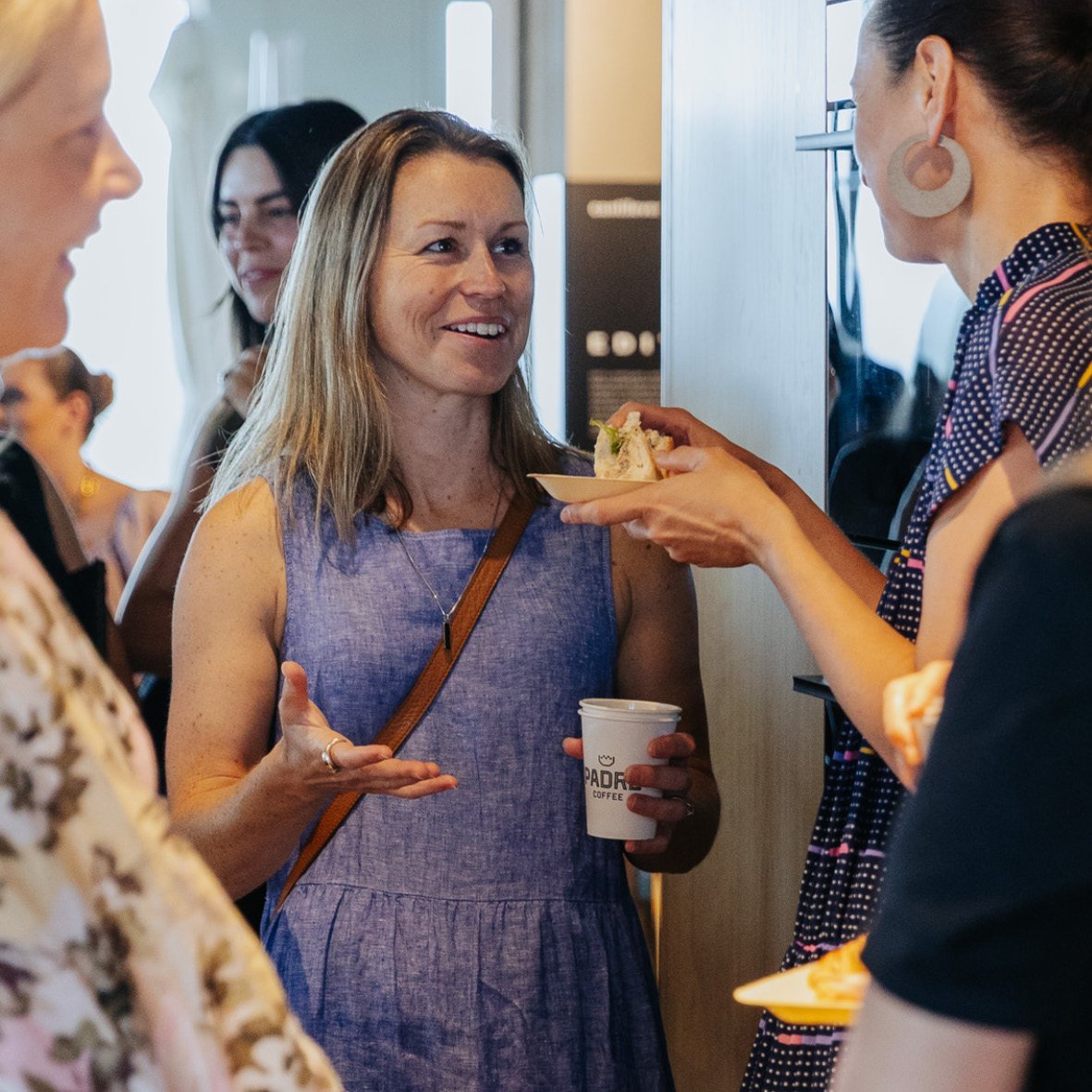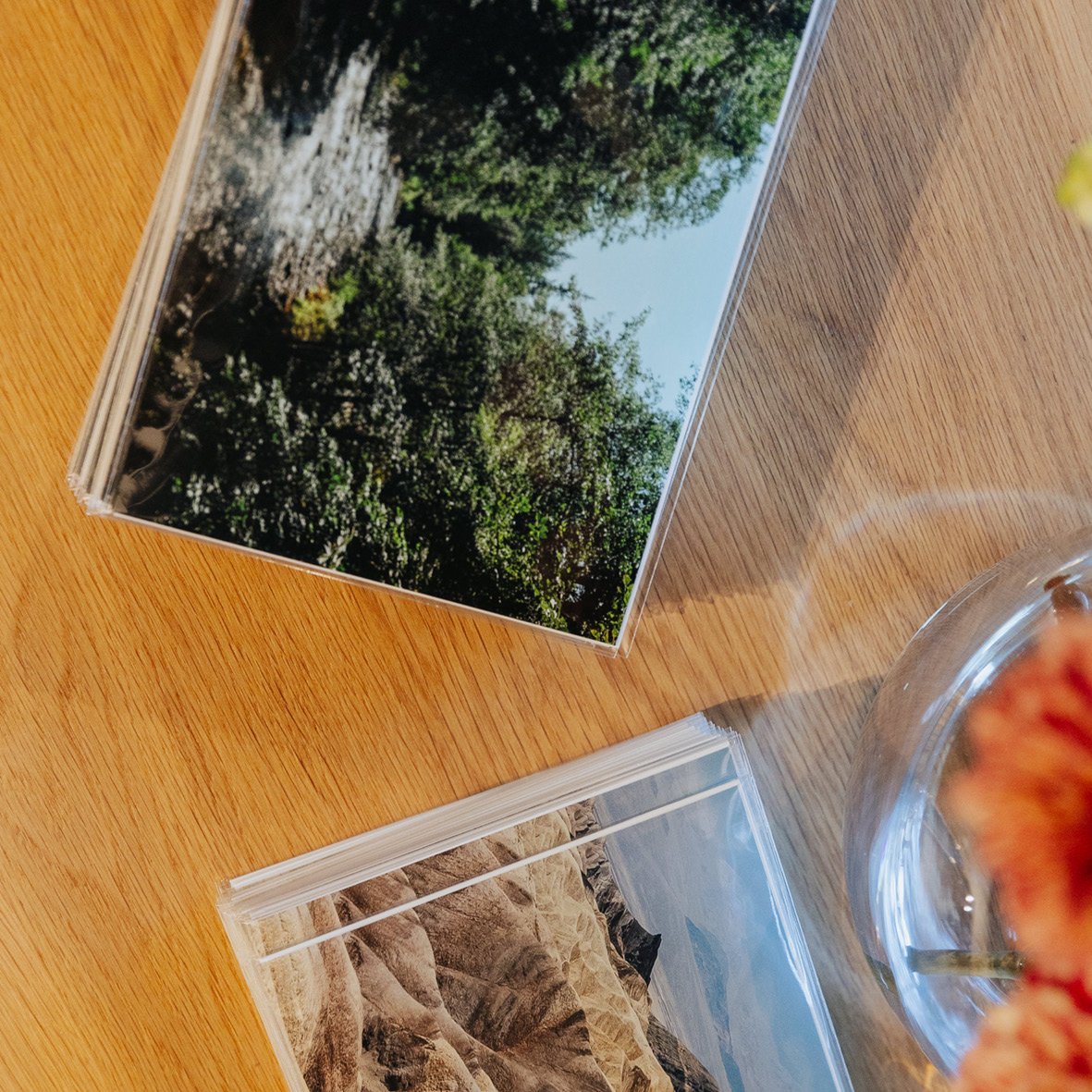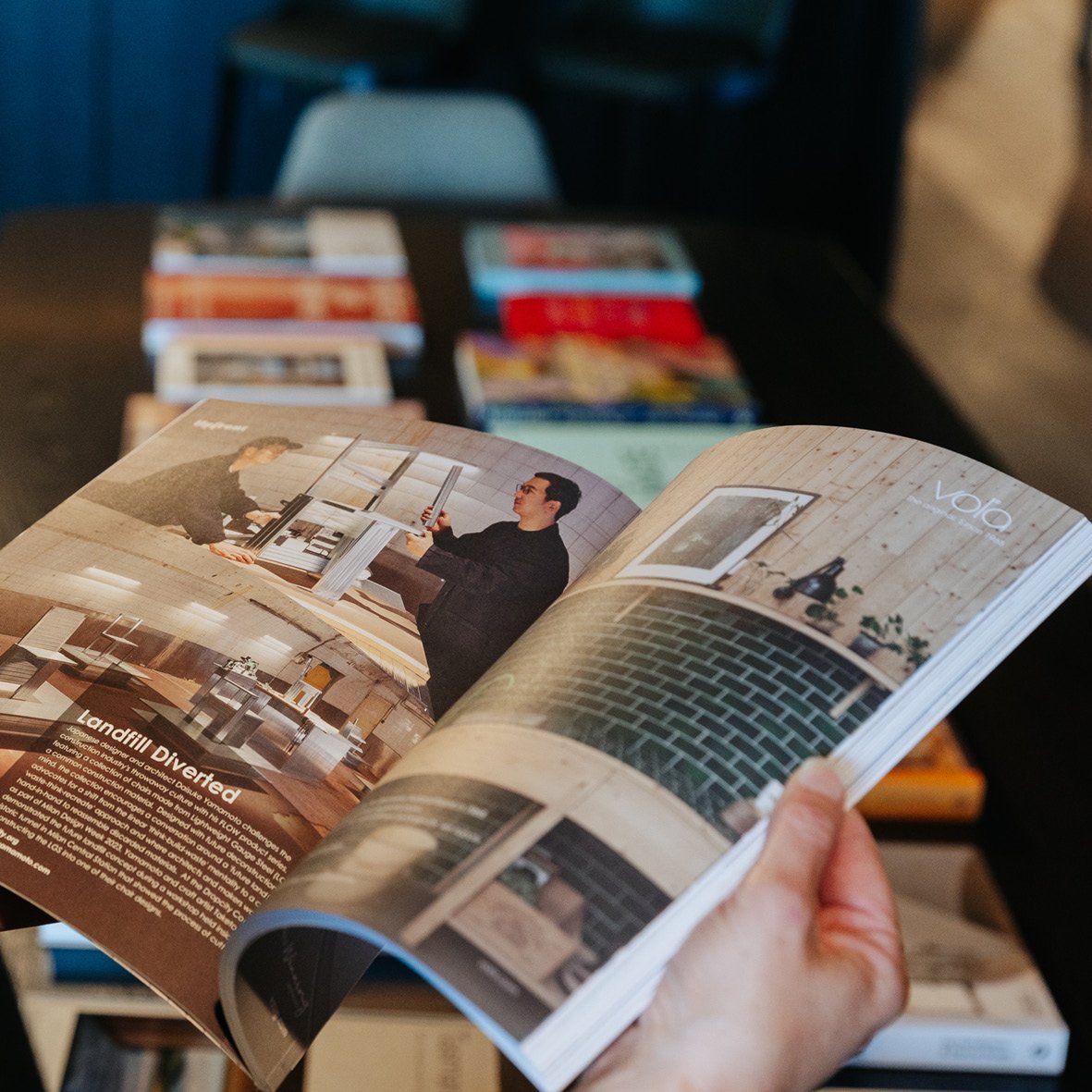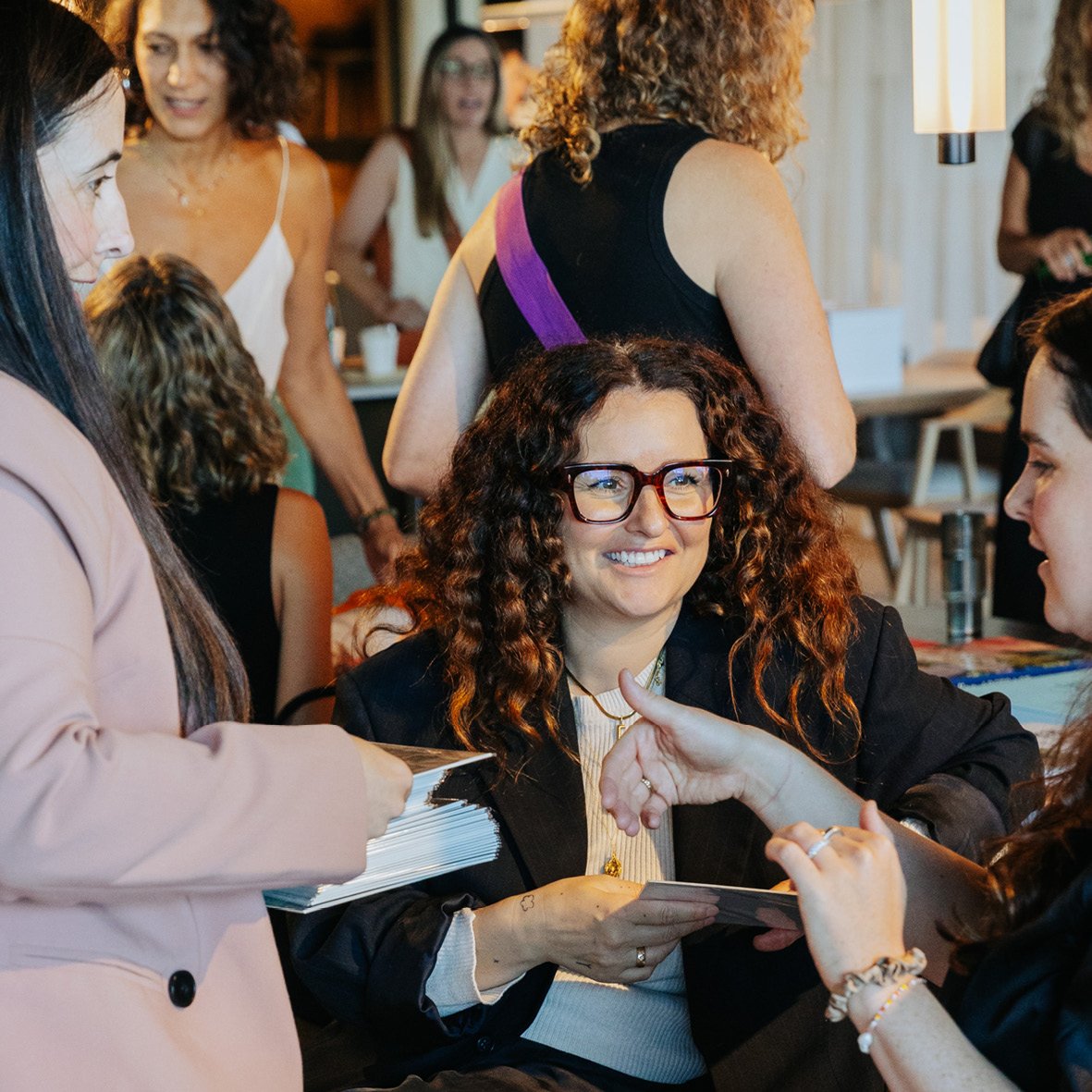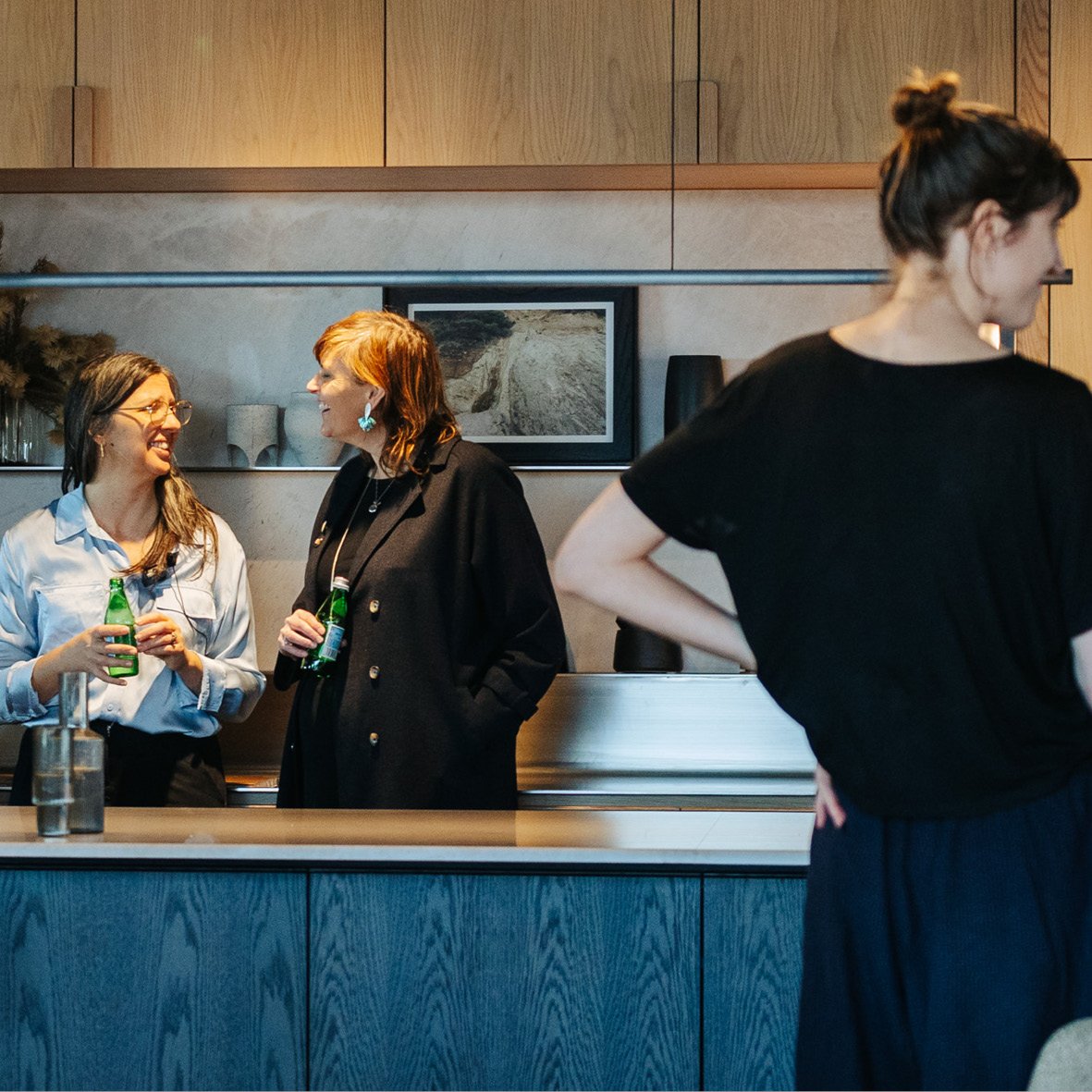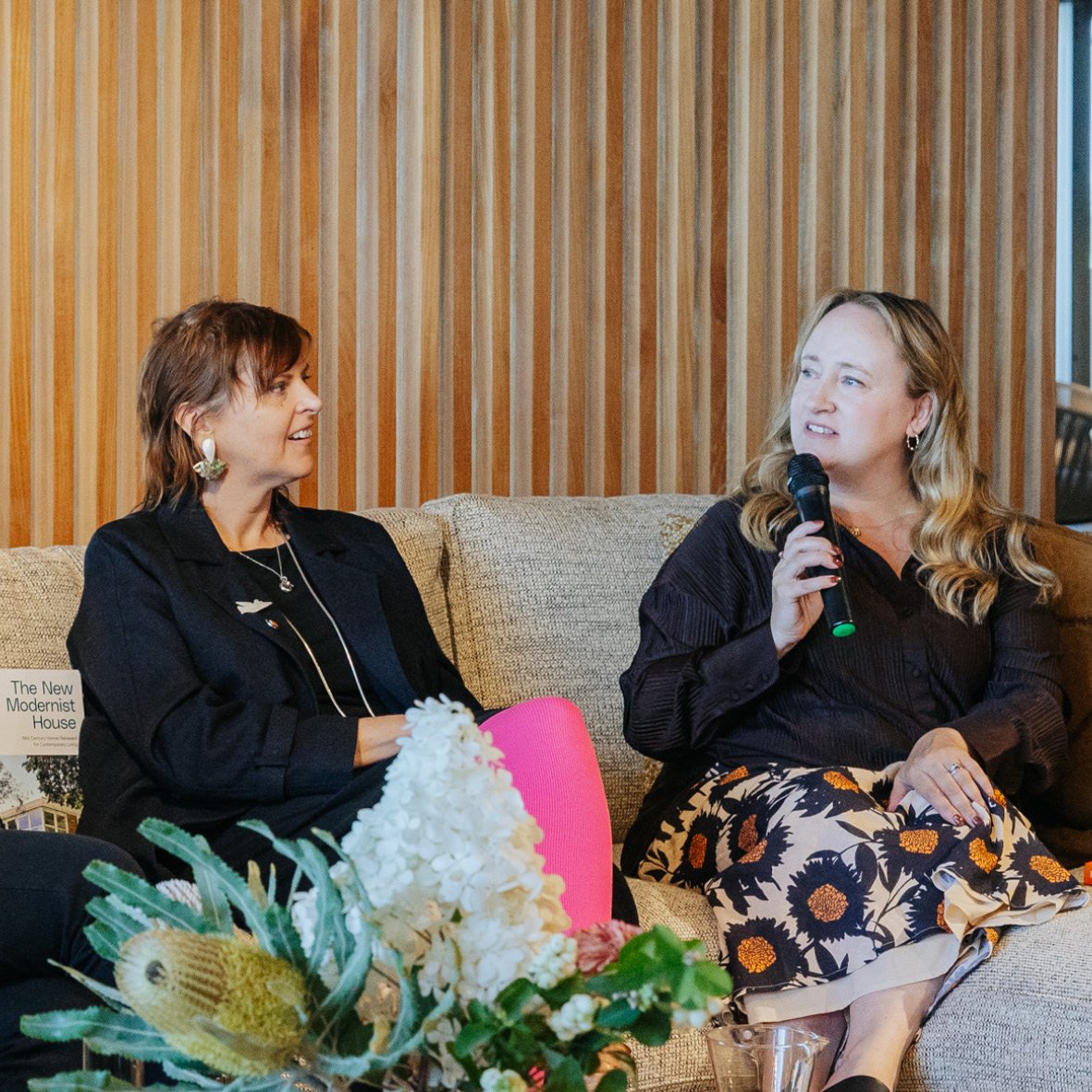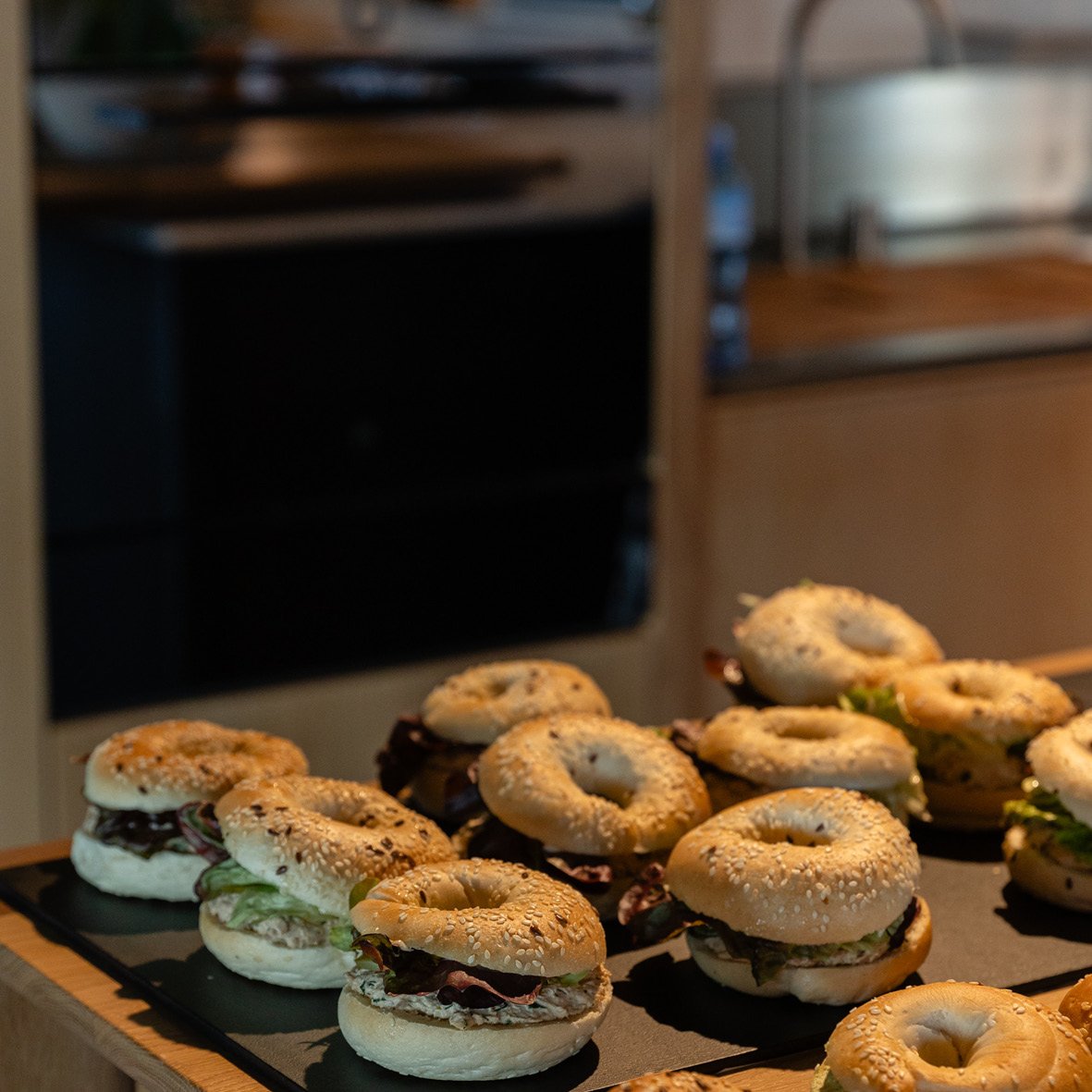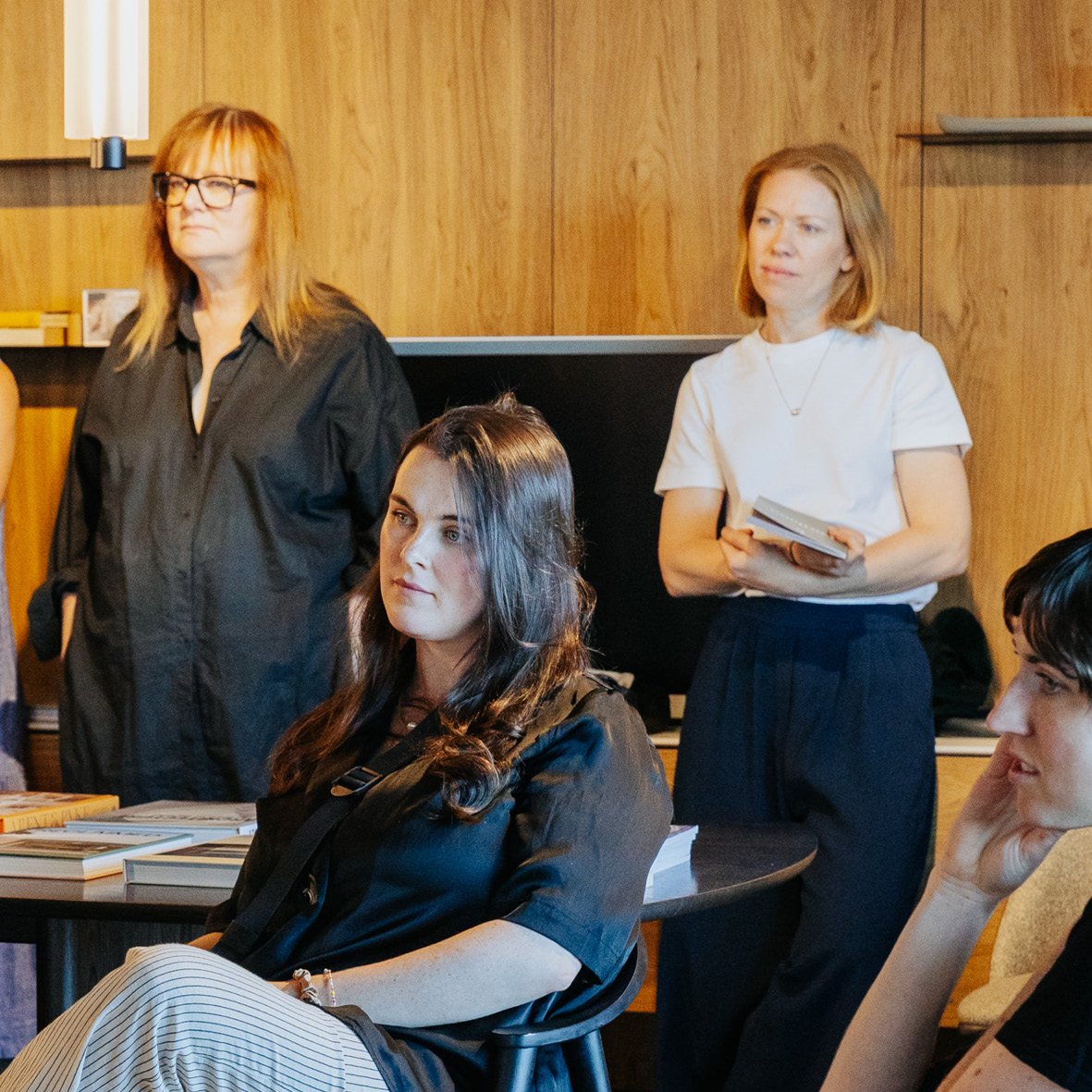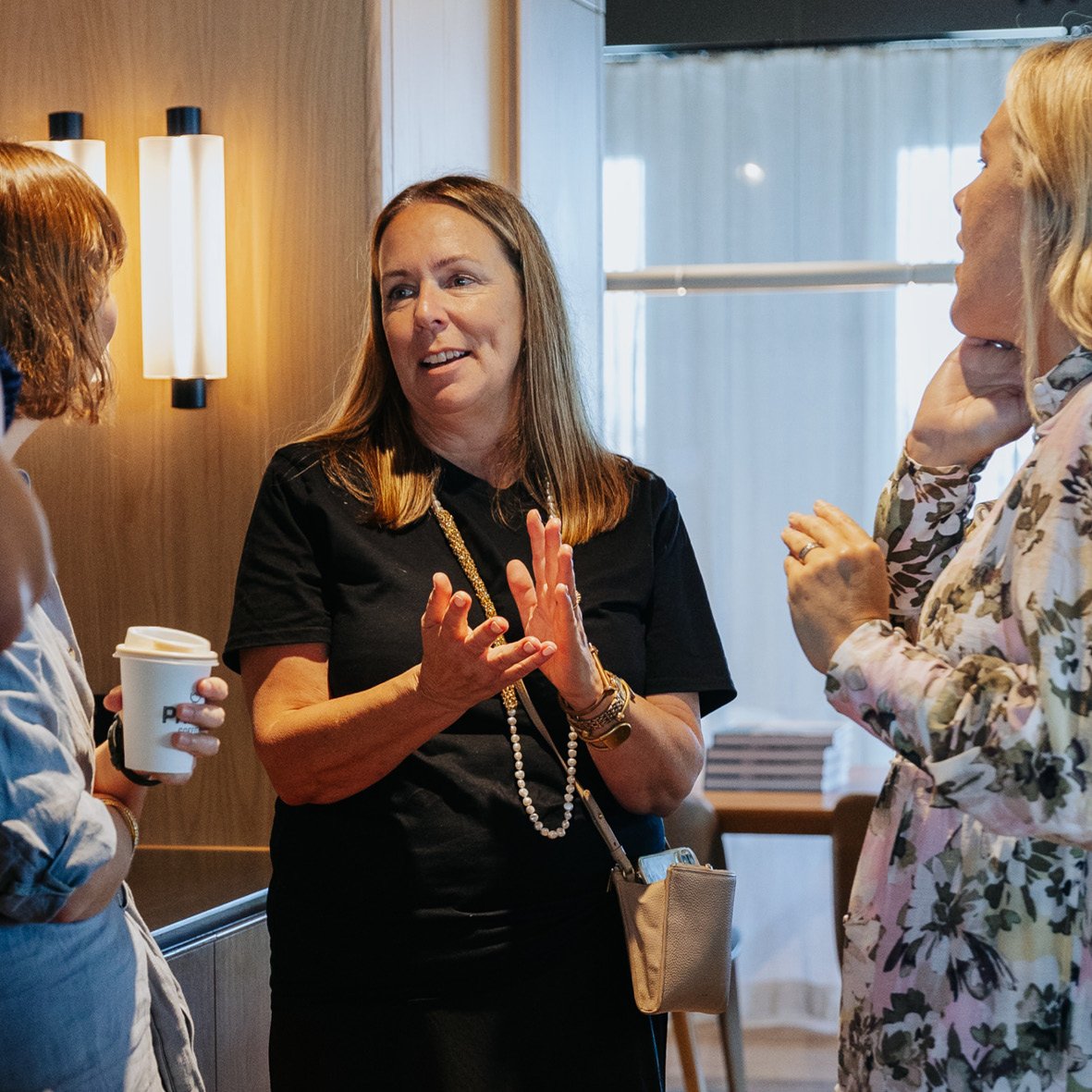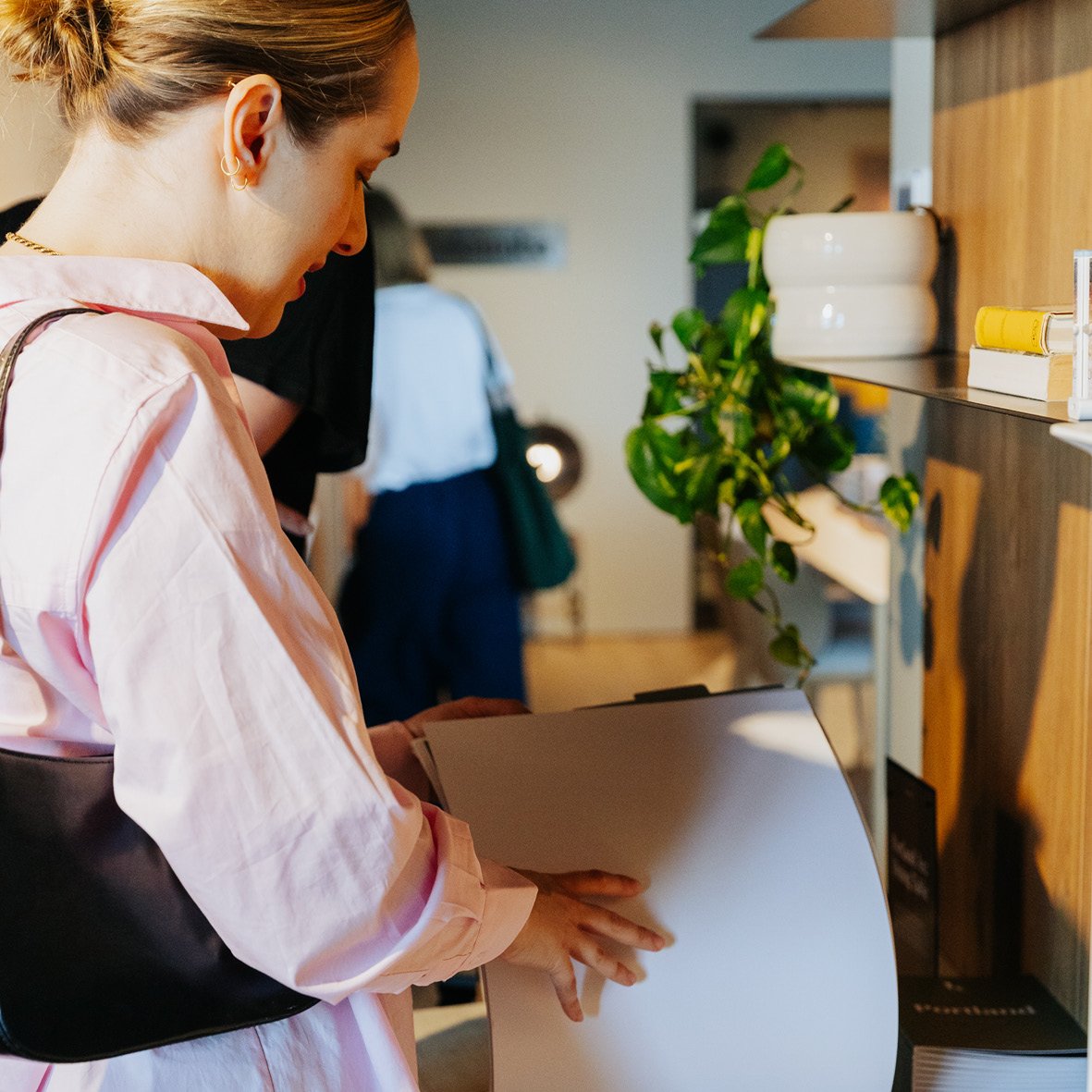EDIT Book Club | Autumn 2024
The EDIT Book Club celebrates the notion that books remain a vestige of considered, meaningful exchange of ideas and inspiration.
Hosted at the Cosh Living Showroom, in the EDIT Kitchen, a series of curated events aim to bring together those that enjoy thought in longform.
Location
Richmond, Melbourne
Images
Diana Risteski
Event Planning
The Project Agency
Special Guests
Lauren Li
Patricia Callan
Welcome to our inaugural EDIT Book Club, held on International Women’s Day.
Celebrating a collection of female-led, or female authored books, supplied by Thames and Hudson, a gathering of women shared their knowledge and support of those in the publishing industry.
We took the opportunity to speak with Lauren Li, author of Beachside Modern and Patricia Callan, author of The New Modernist House.
“The books we are sharing today are both studies of particular global architectural and interior design genres and share examples of projects that epitomise or characterise them.
You both seek to identify these genres, whilst acknowledging the creator’s interpretation of the ideals. ”
Kylie Forbes, Creative Director, Host
Lauren, how do you define the Beachside genre?
Thank you so much Kylie, thank you for having me here, its really lovely to be here and thank you for the beautiful space and to everyone for coming here today, its really cool.
So how to I define the beachside genre? When I was researching for this book, I created 5 different categories.
The first one is Natural, so it’s obviously natural materials, natural colourings. One of them is called Winter for this I wanted to represent beach houses from all around the world where we’ve got Danish beach houses, we’ve got New Zealand, just more of that moody kind of tones. There is one called Beach Coma, it has a bit more of an artistic interior, with gathering different pieces and collections, for which we showed a really cool beach shack in Tasmania. Oh yes, Elevated, for this I wanted to showcase some of Kelly Wearstler’s projects. Then there are also glamorous Bondi beach houses by Alexander and Co. Then Nautical, yes! Which I wanted to show this project by Commune in California, which is a gorgeous Californian, colourful beach house.
That was kind of how I wanted to capture that beach style, by having little chapters, there is also little quiz at the back so that you can kind of define your own beach style. With me, I liked all of the styles, so I needed to figure out how to categorize that as best that I can.
And why did you choose global examples to share these ideas, instead of an Australian selection?
I wanted to go against the clichés, there are beaches that can kind of conjure something in your mind, with being at the beach on the sand with a beach towel. This is all around the world, in Denmark and Tasmania and I wanted to show how you can enjoy those beaches in a different way and how the interiors reflect that.
Patricia, what are the key attributes of a modernist house?
How long have you got? I think that in the book I try to ram it in by explaining briefly, almost like modern century for dummies, although its not for dummies. Now I feel that especially all the good folk here sort of know what they’re talking about, but there’s a wide amass of out there, the general public, who sort of have an idea but don’t really know exactly, and they’re to afraid to ask because they don’t want to seem like they are asking silly questions. So, I tried explain a really brief and generalised version of how domestic or modernist art began, first globally, then I sort of bring in Australian examples. I have a fine line in the book with a few distinct variations, and of course architects in Australia all have their own dynamic way of doing things but there are certainly collections that you can sort of group loosely together.
A mid-century or modernist house in Australia, in 1952 for example, like the one on the cover is very different to a Sydney house or a house in Warrandyte that is beautiful and was built say 25 years later. Because ultimately, it’s about the elemental considerations, like the site and bringing the outside in. With all the technological advancements that happen in the 20th century, predominantly, indoor plumbing and the niceness of glazing a lot of those signatures have all been integrated in different ways. So, I have tried to cover all of those different variations.
And you gathered together 21 properties to illustrate this archetype, did you get to travel to them all?
No, not at all. Secret dilution here, I only actually set foot in two or three of them. I wrote it right in the middle of COVID in 2021, but that wasn’t the reason, it was just a constraint thing, the brief was to write about houses that have already been photographed. I actually really did want to get a wider array across the country, I’m actually a bit disappointed in myself, there is a lot of representation in Victoria, but I only had one house in Adelaide and only one house in WA, but I would have loved to have more, and only a couple in Brisbane as well. I really missed out on one in Tassie that I really wanted to write on, but I couldn’t quite get it together to showcase. So, I have only actually been in a two of them, which is why photography for architects is so important.
“Because ultimately, it’s about the elemental considerations”
Patricia Callan, The New Modernist House
Would you describe Beachside Modern or New Modernist genres as an aesthetic style, or a design approach, or even a design movement?
Lauren Li:
I guess elements of both, I don’t think that there is anything wrong with it being for the aesthetics as well. But I think talking about the beach book, its drawing on how you want to feel, so that’s why I had these sort of different chapters, because you know the feeling you get when you’re walking down the beach in Bondi, its very fun and out there, its different when you‘re walking in the sun. Whereas in Tassie, its more natural and raw, so its about how we can translate those feelings to the inside of the home, so that’s why I wanted to draw on those locations and that feeling you get at the beach.
I am personally not a sun bather, but I love going to the beach, I love walking along the beach in all the seasons, what are those feelings that we can bring into the home. So, is it like an aesthetic thing? Yes, and there are some pages in there that show you know how to get the look in a more magazine, tutorial sort of approach and I really wanted to write it in an approachable way. So not just for designers to pick up but people that want to get the most out of their home, and get some ideas, get some inspiration. Its not always about having a huge budget, its about just you know making a little corner of your home, just start there, enjoy that little corner and then work on the next corner, I just hope that everybody can make the most out of their space. So that’s kind of where I was going with this book here. I don’t know if it’s a design movement as much, but I suppose all the spaces are quite contemporary, that is a thread that runs through.
Patricia Callan:
I think that in the book I talk about how ultimately modernism is a design and sort of a whole philosophy.
Basically, pulling a part that concept of the house that is square with a triangle roof and a rectangle door at the front. But I also talk a bit about two things, one is that I myself am not architecturally trained, and the way that I really came into the world of modernism and mid-century houses and leaned on more architectural houses was through furniture and pop culture. I talk about this because I really want people to understand what really good design for housing is and I want them to have a better grasp on orientation and insulation and all those bare bones things. But the way you get them in, the way that I was brought in was by the beauty of the spaces and the beauty of the furniture and bringing out the elements and the nature of the material that you are working with. You know it goes hand in hand with anything, mid century architecture and houses can be best saved by interiors design and furniture and that attraction in the first place.
“I just hope that everybody can make the most out of their space.”
Lauren Li, Beachside Modern
What values underpin these genres?
Patricia Callan:
I’d say it’s an important design principle, and you know its timeless now, it’s a classic. It a bit like kids these days or even us, we can’t grasp the world pre rock and roll or pre abstract painting, we can’t understand what it was like. You know people can’t understand what a house looks like without an open plan kitchen, they don’t understand that a hundred twenty years ago it was tacked on at the back, it was horrible, it was dark, and certainly not good for the Australian environment, as it was imported all the way from England. Its in the culture, so that we can bring it back to more of its roots and where it started perhaps.
Kylie Forbes:
It does make me think that there is a possibility for an international edition because it would be really interesting to see how Australia has adapted these concepts to environmental conscious ways and in what ways this played out. Because you wrote about the influence of post war immigration and bringing across that knowledge from Europe into Australia, and the opportunity to share that.
So, both genres have distinct relationships with their surrounding landscapes, can you tell us about this?
Patricia Callan:
So, following on from what you were just saying I do write a bit about gardening even though I’m not a landscape writer. But that is a great way to actually show the Australian aspect of Australia’s intrigue and modernism is the embracing of Indigenous flora and fauna. And how the classic Australia story you need an outsider to come in aside from all the indigenous knowledge and so on that we just completely ignored. You know Walter Burley Griffin came in 1914 with his wife and started a bush walking society and started planting the lemon scented gum around the roundabout near Carlton, and not a big oak tree, not an elm, not a pine. A western Australian lemon scented gum. So, it’s like all of those things were really embraced by that mid-century, and one of the clearest indicators that we were changing and looking for our own country and our own language and our own aesthetics and all of those things, through gardening.
Lauren Li:
The nature of the book is about how you can draw on natural materials and the surrounding landscape. What you see in a house in Denmark is quite sparce and you look outside the landscape is very sparce as well. So, its about bringing the materials that are nearby and also the feeling that they bring, which I really responded too and loved that.
“The Australian aspect of Australia’s intrigue and modernism is the embracing of Indigenous flora and fauna.”
- Patricia Callan, The New Modernist House
When describing the Caulfield Townhouse, Patricia, you write:
“An acknowledgement of self and personal styling in this way imbues any home with honesty, and in this case makes for a stunning outcome, one that celebrates history and design, without being a slave to any of it.”
You both speak to the importance of moving beyond mere imitation, of instilling an honesty and personalisation in a project. Are you defining a sense of belonging?
Patricia Callan:
I think it’s the interior choice of things, like the furniture and artwork and architecture and so on. And corporate houses are an example, of not just buying a set of things and putting them in. But actually, having objects, and especially things like artwork and books that are really about you and your personality and your life and your loved ones. Because at the end of it all that’s all you have. And they just have meaning and a home without meaning is just a shell.
Lauren Li:
Well, I agree, I think that with my books, I like spaces that are lived in, its a weird thing as an interior designer to tell your client what they should have in a way because it’s all about them, so we need to draw out our clients. What’s their personality, what’s their vibe, how do they want to live. We ask all the questions so that we can take it on board and give them back things that we are recommending. Because, I don’t want my client’s spaces to look like I’ve been there in a way, I want them to look like they’ve been there, and I’ve gotten some pretty wild briefs from some clients lately.
But with the book as well these spaces that are not overly styled, it looks like somebody actually lives there, obliviously we all know everything is styled, but I’m sort of more looking at those places that look like somebody has just stepped out of the living room and have taken the shot. Its about not taking out all of those things that tell you that person lives there, and I know that with photoshoots you do take out those personal things, but it’s that fine line, isn’t it? So, it is a funny one as an interior designer, as I want it to represent my client the way they want to show their personality and not me.
“A home without meaning is just a shell.”
- Patricia Callan, The New Modernist Look
“I don’t want my client’s spaces to look like I’ve been there in a way, I want them to look like they’ve been there.”
Lauren Li, Beachside Modern
You both speak to the influence the regions that you grew up in had on your respective design explorations. What memories have influenced your design interests?
Lauren Li:
So, I grew up in Mount Elisa, so the beach was just always there. I used to go walking along the beach and I was always trying to look in people’s houses that were along the beach, sort of looking in the window, its not weird to do that everyone does that right? Going down all those hills, seeing the round house, and it’s not until you’re older that you realise that that is a cool house and as a kid you don’t notice that. And talking about Walter Burley Griffin I think he did some landscaping down in Mount Elisa as well, it’s interesting when you realise there are some significant places down that way.
But the beach was just kind of always there, so it did influence a bit of this book. Plus, my mum has always decorated the house, and I know some of you have met her at my events, she would always have a bowl of potpourri on the coffee table, and the terracotta ducks, and there was not a handle without a tassel on it. So, you know this sort of being house proud and I guess that does sort of rub off, doesn’t it?
Patricia Callan:
I dedicated my book to my mum, and said for the “unassuming modernist”", because she really was. She was a bit older, so she never really personified as a hippie or anything. But I like to put this down to her mother who was Danish, she was very pragmatic and loved her native garden and I grew up in Geelong. I was the youngest in the family, it was the sixties, and dad’s business was doing pretty well, so what do you do when you’re in Geelong, got a two-bedroom house and five kids, you build something. And all the captains of the industry in Geelong had these beautiful, old houses, in Newtown just a block around the river, they are very beautiful, lots of Edwardian, gorgeous. A friend of a friend invited my mum to a morning tea and they had just moved into this house, and it had just been built by this firm called the Russian Everest. And mum went in, and it was just timber, with clean lines, and not fussy, easy to clean, really letting the nature in, and she was like let’s get these guys to build our house. So, mum got them to build our house and that was in 1968, and that was the house I grew up in until I left home. Again, it imprints in your mind, you don’t know, you know its going to be different to other houses, but you don’t really understand really until you leave.
Kylie Forbes:
Yeah, the feel of the place itself, like orientation or the light and the quality of that.
I guess, having grown up in that environment, you have that motivation to share that opportunity, to share that with other people, those experiences.
To receive details of the next book club gathering, click below

